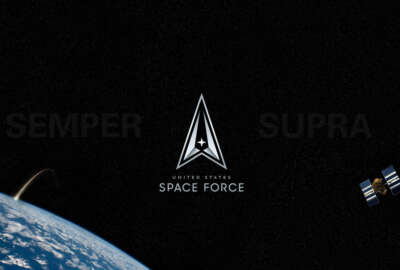Space Force’s new strategy to push for ‘allied by design’ space systems
The Space Force's focus on systems that are "allied by design" signals a shift from the service's isolated approach to developing space capabilities.
In a shift toward bolstering international partnerships, the Space Force is developing an allied space strategy, with the goal of creating systems that are “allied by design.”
“Every capability that we design, we’re trying to design the relationships and the interfaces in with our partnerships,” Vice Chief of Space Operations Gen. Michael Guetlein said during the Intelligence and National Security Alliance event on Wednesday.
The strategy will align with the recently released commercial space strategy, which lays out what the service needs from the space industry and how it plans to procure and integrate commercial space capabilities. Guetlein said the effort will allow the service to “really get after these relationships” and focus on integrating systems, capabilities and data-sharing practices at the operational level.
Actively pursuing commercial and international partnerships signals a shift from the service’s historically isolated approach, especially in its early days, and lack of integration with the military services, industry partners and allies.
“We can no longer go alone. I can no longer solely rely on the kit that I own and operate. I now have to partner and that is completely changing our culture and that capability now has to integrate into a joint fight,” said Guetlein.
But overclassification of data has long been hindering information sharing both internally and with allies and partners. Defense leaders have been pushing for lowering classification levels and moving some information into the open.
Last year, Deputy Secretary of Defense Kathleen Hicks signed a classification policy for space programs that attempts to remove those legacy classification barriers. John Plumb, assistant secretary of defense for space policy, said some progress has been made on reducing classification levels, but it will take some time for this new policy to have an impact.
The service is also taking advantage of the “allied exchange model,” which allows the Space Force to contribute unclassified space domain awareness data to a data lake and share it with allies.
“Obviously, we want to get to greater than unclassified data. The good news is everything that we’re doing for the unclassified data is directly transposable to the way we do it at the higher classification levels,” said Guetlein.
“[Assistant Secretary of the Air Force for Space Acquisition and Integration Frank Calvelli] has taken it upon himself to take all of the space systems and reduce the classification down to a level where we can start talking to our international partners across the board, so things that we don’t even talk to ourselves about right now, within the near future, we’ll be able to talk to our international partners.”
The service’s combined space operations center has just welcomed Air Marshal Paul Godfrey, the first foreign officer to join the service’s leadership. Godfrey will serve as the strategic advisor to Chief of Space Operations Gen. B. Chance Saltzman on all matters related to space superiority and resiliency through international partnerships.
“This is a significant step forward in promoting closer cooperation with an important ally, and it exemplifies the kind of partnership we need to internalize as a Service. AM Godfrey’s arrival is unprecedented, and it pushes the boundaries of what it means to be Integrated by Design,” Saltzman said in a letter to Guardians.
And some ongoing projects highlight the service’s commitment to fostering international partnerships and incorporating allies into the development and operational phases of new systems to ensure they are interoperable with U.S. systems.
The service, for instance, is working with Australia and the U.K. to build a deep space radar system in Western Australia as part of the AUKUS partnership. Luxembourg and Spain recently joined the U.S., France, Italy and the U.K. to provide military satellite communications. And the U.S. Southern Command, U.S. Space Command and the Chilean Air Force are working on installing a half-meter class telescope at Cerro Moreno Air Base in Antofagasta.
“The one that I’m most excited about though brings our allies and our commercial partners together in the Joint Commercial Operations cell. We have an operational floor at Schriever Space Force base that has both our commercial, our government and our allies on the operational floor, sharing unclassified data from our commercial partners. But then we have an operational floor in the U.K. and an operational floor in New Zealand,” said Guetlein.
Copyright © 2025 Federal News Network. All rights reserved. This website is not intended for users located within the European Economic Area.





